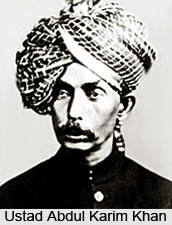 Learned scholars worked out a uniform system of notation, systematization of the `ragas` sung in North India so as to make the same easy of instruction and assimilation. This period witnessed growth of music clubs and schools offering facilities for serious study of the art. This has been the work of the Indians in the nineteenth and early twentieth century.
Learned scholars worked out a uniform system of notation, systematization of the `ragas` sung in North India so as to make the same easy of instruction and assimilation. This period witnessed growth of music clubs and schools offering facilities for serious study of the art. This has been the work of the Indians in the nineteenth and early twentieth century.
Prior to the renaissance music had declined in India with the downfall of the Mughal Empire. The first steps were taken by Maharaja Pratap Singh Deva of Jaipur and Mohammad Raza of Patna, a nobleman. Maharaja Pratap Singh called a conference of musicians and attempted to get a standard work on Hindustani music written. The book was called Sangita Sara and gives valuable guidance about music. Mohammad Raza wrote in 1814 the Nagmat-e-Asaphi to simplify the classification of the Ragas of his day. The great principle which he stated was that there should be some common features between the Ragas and the Raginis. The most monumental work in the 19th century was that of Raja Sir S. M. Tagore whose history of Indian music and other works like Sangit Sara and Kanthakaumudi put modern Indian music on its feet. There were musicians like Ustad Abdul Karim Khan.
Vishnu Narayan Bhatkhande deserves to be called the father of modern Hindustani music. His lectures provided the nucleus for the new education in music which was introduced all over India. He classified all the `Ragas` under ten `thatas`, or `melas` putting all the Ragas under them on the basis of their resemblance with the parent `Raga.` His disciples are teachers in various institutions all over India.
Vishnu Digambar was another great musician and composer of that time. He rescued music from the clutches of its vulgar caterers and educated people in the right type of music, attracted educated men towards music and devised a simple system of musical notation. His tune of Raghupati Raghava Raja Ram has become famous.
The Bengali music including Rabindra Sangeet developed during this period. The emphasis was on background music or orchestration. The radio was also popularizing music. There was group music like the Kirtans and Loka-giti. Some of the notable musicians of the twentieth century are Amir Khan, Dilip Kumar Roy, Bhisma Dev Chattopadhyay, Narayana Rao Vyas, Subbalakshmi and many more. Musical academies came up in Gwalior, Madras, Lucknow, Poona, Baroda, Kolkata and Shantiniketan.
The Indian music differs from the Western system. Melody is the dominant factor. In the West it is harmony. In Indian music notes are related to a definite notes of a `Raga` and in the western music it is related to varying chords. Melody is produced by regulated succession of concordant notes while harmony arises from agreeable concord of various related notes. Western music is more secular while the Eastern is more religious. The great task before the Indian musicians today is to find a synthesis between the music of the North and the South and between the Indian and the Western music.






































